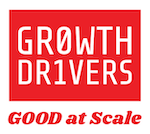Response Rate ≠ ROI: A Balanced Approach to Nonprofit Success
In nonprofit marketing, metrics like response rate and return on investment (ROI) play critical roles in evaluating the success of fundraising efforts. However, these metrics are often misunderstood or used in isolation, leading to strategies that might not fully capitalize on available opportunities. Response rate is an important component of a comprehensive understanding of campaign performance, but it should be viewed in conjunction with ROI and other metrics to guide a holistic and effective marketing strategy. Recent insights from the Association of National Advertisers (ANA) and M+R Benchmarks underline the value of this integrated approach, especially across diverse channels such as direct mail, email, paid social media, connected TV, radio, paid search, and online display ads.
The Role of Response Rate in a Multi-Channel Strategy
Response rate measures the percentage of recipients who take a desired action in response to a marketing effort, such as donating or engaging with content. In channels like direct mail, response rates have traditionally been a key measure of success. For instance, direct mail campaigns typically aim for a 2-3% response rate, which is often higher than what is seen with digital channels. Studies such as the ANA Response Rate Report 2023 have shown direct mail rates as high as 10.8% However, while response rate is important, it does not provide a complete picture of a campaign’s effectiveness.
In today’s complex marketing environment, nonprofit organizations engage with supporters through various channels. Email, paid social media, connected TV, radio, paid search, and online display ads each contribute to a campaign’s overall response and impact. While direct mail might sometimes achieve higher response rates, digital channels often deliver higher ROI due to lower costs and broader audience reach.
For example, the 2024 M+R Benchmarks report indicates that while email fundraising response rates at 0.07% are typically lower than those of direct mail, the cost-effectiveness often results in a better ROI. Similarly, studies of paid social media show a wide range of click-through rates, anywhere from 0.5% to 2.5%, but the low cost and immense scale provide great potential for revenue.
ROI: The Bigger Picture
ROI, which measures the financial return generated from a campaign relative to its cost, provides a more comprehensive understanding of marketing performance. A high response rate in a costly channel like direct mail might not yield the best ROI if the expenses outweigh the revenue generated. Conversely, a lower response rate in a more affordable channel like paid social or online display ads can still result in a strong ROI if the costs are well-managed.
Let’s look at an example. A direct mail campaign may cost $0.30 per unit produced and delivered, totaling $300 per 1000. A 3% response rate would cost $10 per response. A social paid media campaign may cost $23 per 1000. A 0.5% response rate would cost $4.60 per response. If both campaigns delivered an average donation of $10, the direct mail ROI would be 1 or 100%, and the social paid media ROI would be 2.17 or 217%.
| Cost Per 1000 | Response Rate | Cost Per Response | Average Donation | ROI | |
| Direct Mail | $300 | 3% | $10 | $10 | 100% |
| Paid Social Media | $23 | 0.5% | $4.60 | $10 | 217% |
For nonprofits, balancing response rate with ROI across channels is key to optimizing overall campaign success. Direct mail remains a valuable tool for reaching specific demographics, but it should be part of a broader strategy that includes digital and traditional media. For example, paid social media, connected TV, and online display ads offer cost-effective ways to reach younger and more tech-savvy audiences. Radio and paid search can help capture attention at different points in the donor journey, contributing to long-term engagement and financial sustainability.
A Holistic Approach to Success
The most effective nonprofit marketing strategies integrate response rate with ROI, considering both short-term engagement and long-term financial impact. By adopting a holistic approach that leverages the strengths of multiple channels, nonprofits can ensure that their campaigns are cost-effective and impactful.
To maximize nonprofit marketing success through a balanced understanding of response rate and ROI, consider the following action items:
- Integrate Multiple Channels: Diversify your marketing strategy by leveraging a mix of direct mail, email, paid social media, connected TV, radio, paid search, and online display ads. Each channel brings unique strengths that can enhance overall campaign performance.
- Balance Response Rate with ROI: Don’t rely solely on response rates to measure success. Always consider the cost of each channel and evaluate campaigns based on ROI to ensure that your efforts are both effective and financially sustainable.
- Segment and Target Strategically: Use data to identify which channels work best for different donor segments. For example, direct mail may perform well with older donors, while digital channels might better engage younger audiences.
- Invest in Donor Retention: Focus not just on acquiring new donors but on retaining existing ones. Channels like email and paid social media are particularly effective for ongoing engagement, which can lead to higher lifetime value and better ROI.
- Continuously Test and Optimize: Regularly test different messages, formats, and channel combinations to see what yields the best results. Use these insights to continuously refine your strategy for improved performance over time.
By following these steps, nonprofits can create a more effective and comprehensive marketing strategy that aligns with both immediate and long-term goals.
Mike Scafidi
CTO - Partner
Mike has led organizational transformations by integrating people, marketing, data, and technology. With 25+ years in digital marketing at PepsiCo and Publicis, he brings a wealth of brand and agency experience. His nonprofit work spans the arts, healthcare, environmental, and adoption sectors. Named in the top 100 Digirati.
